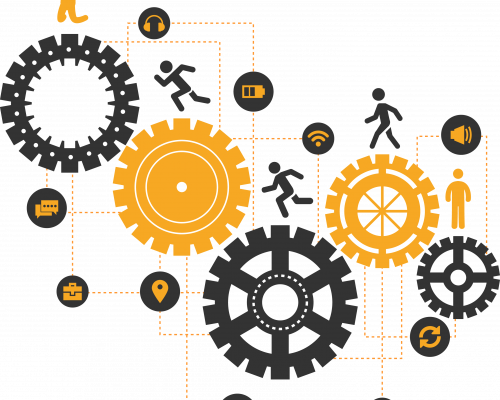
Best Tools for Cloud Infrastructure Automation
The integration of Development and Operations brings up with a new perspective to software development. If you are new to the DevOps practices or looking to improve your current processes, then it can be a challenging task to know which tool is best for your team.
So, let’s take a look at the best DevOps Infrastructure Automation Tools, from automated build tools to application performance monitoring platforms.
- Ansible
Ansible automates a range of IT aspects, building configuration management, cloud provisioning, and application deployment. It is focused on the way various systems of your IT infrastructure interact with each other rather than managing a component at a time.
Ansible can be easily managed using a web interface called by the name as Ansible Tower. The tool offers a range of pricing models where users can choose from a basic, standard, or premium package and gets a custom quote for the features they use.
- Datadog
Datadog is primarily a monitoring tool for cloud applications. It offers detailed metrics for all your cloud applications, servers, and networks as well. It can be easily integrated with some other automation tools such as Chef, Puppet, Ansible, etc.
Datadog can help in quick detection and troubleshooting of problems within the system. Thus, it is quite a time and cost-efficient solution for managing your cloud infrastructure.
- Puppet
Puppet is an Infrastructure as a Code (IaaC) tool that lets users define the desired state of their infrastructure and automate the systems to achieve the same.
It monitors all your system and prevents any deviation from the defined state. Starting from simple workflow automation to infrastructure configuration and compliance, Puppet can do it all. The open-source tools are free, while the enterprise model for more than ten nodes is chargeable. Companies can get custom pricing quotes based on their requirements.
It is a tool preferred by companies such as Google and Dell; Puppet is the perfect tool to maintain consistency in the system while maximizing productivity.
- Selenium
Primarily created for testing web applications, Selenium is a robust tool for automating web browsers. It is the best tool in the market for web app testing and management. Companies can easily create quick bug fixing scripts as well as develop automated, regressive bug fixing mechanism with Selenium.
Selenium combines software, with each serving a different purpose: Selenium Integrated Development Environment (IDE), Selenium Remote Control (RC), Selenium WebDriver, and Selenium Grid. It is free, open-source software that can be sponsored under the standard Apache 2.0 license.
It is quite easy to use and install and offers support for extensions as well.
- Docker
Docker is a tool that focuses on continuous integration and deployment of code. Developers can easily create and manage applications using Dockerfiles.
DockerFIles enables application management in isolated environments, including system files, code, libraries, and other functions. Hence, it is highly preferred by companies engaged in multi-cloud and hybrid computing.
Docker helps to save up a lot of time and resources while enhancing the productivity of the system and can also be easily integrated with existing systems.
- Cisco Intelligent Automation for Cloud
Cisco provides with a number of cloud offerings, from private to public to hybrid solutions. Apart from these offerings, Cisco intelligent Automation for cloud gives everything from infrastructure as a service (IaaS) to hands-on provisioning and management of instances running in the Cisco cloud or in other cloud environments, including the VMware, OpenStack, and AWS.
Some of its excellent features include a self-service portal for users of your cloud, multi-tenancy and network service automation. Though created with Cisco’s own cloud infrastructure offerings in mind, Cisco Intelligent Automation for Cloud benefits from being able to extend the automation tooling into other ecosystems.
- Vagrant
Vagrant is an excellent tool for configuring virtual machines for a development environment. Vagrant runs on the top of the Virtual machines like VirtualBox, VMware, Hyper-V, etc. It uses a configuration file known as a VagrantFile, which contains all the configurations needed for the VM. Once a virtual machine is created, then it can be shared with other developers to have the same development environment. Vagrant has lots of plugins available for cloud provisioning, configuration management tools, and Docker.
RECENT POSTS
-
 Clavent’s Emerge 2020 Martech Summit Goes Virtual, powered by CleverTap08 Sep 2020 PR
Clavent’s Emerge 2020 Martech Summit Goes Virtual, powered by CleverTap08 Sep 2020 PR -
 Emerge 2020 HR Tech Summit Concluded Successfully12 Jul 2020 PR
Emerge 2020 HR Tech Summit Concluded Successfully12 Jul 2020 PR -
 Emerge 2020 HR Tech Summit12 Jul 2020 PR
Emerge 2020 HR Tech Summit12 Jul 2020 PR -
 My Experience Attending "How to Build High Performing Teams?" - Workshop On How to be a Good Manager.12 May 2020 Authored Articles
My Experience Attending "How to Build High Performing Teams?" - Workshop On How to be a Good Manager.12 May 2020 Authored Articles -
 Top Quantum Computing Companies to look out for in 202029 Apr 2020 Listicles
Top Quantum Computing Companies to look out for in 202029 Apr 2020 Listicles
